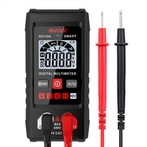Common faults and countermeasures of gas detectors
Fault 1. Low concentration gas cannot be detected
solutions:
1. Check whether the air pump of the gas detector is working normally. Block the air inlet with your finger for 5 seconds. If there is obvious suction, if there is no suction, check whether the air inlet is blocked;
2. Introduce nitrogen gas to calibrate the zero point or calibrate the zero point in clean air, and then test after calibration;
3. If the measured gas cannot be detected after zero point calibration, the gas detector needs to be restored to factory settings;
4. The above steps have been performed but still can not be detected. It is necessary to confirm whether there is a gas to be measured on site, or the concentration of the gas to be measured is really low. If it is lower than the small detection accuracy of the gas sensor, it cannot be detected.
Fault 2. In the air, there is no measured gas, but the value fluctuates greatly or jumps wildly
solutions:
1. The short-term zero point fluctuation range is less than 1% of the large range, which belongs to the normal range. In the absence of the measured gas, the long-term drift is less than 2% of the large range. Gas, or the temperature and humidity in the air fluctuate greatly, resulting in unstable values;
2. Confirm whether the zero point calibration or the target point calibration operation has been performed on the gas detector. If the zero point calibration operation is performed in the place where there is a gas to be measured, it may not be able to detect low-concentration gases. The target point calibration is performed, but the calibrated concentration value does not match the actual concentration value, which may cause the value of the gas detector to fluctuate greatly or the detected value is too small. These two situations can be resolved by restoring the factory operation;
3. If the problem cannot be solved, it is necessary to confirm whether the gas detector is fed with high-concentration gas or high-concentration gas has impacted the gas sensor. If it has impacted the gas sensor, turn on the gas detector and run it for 24 hours. If the value is not stable, the gas sensor may be damaged by impact, and the gas sensor needs to be replaced.
Fault 3. Inaccurate detection
solutions:
1. Confirm whether the gas concentration on site is accurate. The difference between the theoretical value and the actual value is large. Calibrate the gas detector by introducing standard gas to ensure the accuracy of the detection, or send it to a third-party measurement institution for verification and calibration;
2. If the gas sensor is used for a long time, there may be errors in the measured value. It is necessary to confirm with the manufacturer whether the gas sensor can continue to be used. If the sensor itself is approaching its service life, it can be normal in a short time even after recalibration It is used, but the measured value of the gas detector will drift and the detection will be inaccurate. It is recommended to replace the gas sensor.
Fault 4, when the value is 0 or the alarm value is not reached in the air, it will also alarm
solutions:
1. Check whether the various alarm value parameters of the gas detector have been modified;
2. Check whether the alarm mode and alarm mode of the gas detector have been modified;
3. Check whether the alarm status of the gas detector is a concentration alarm or other fault alarm, the concentration alarm will appear A1 or A2, and the red indicator light will flash;
4. If the gas detector alarm caused by manual modification can be solved by restoring the factory settings, the fault alarm needs to be further checked for short circuit, open circuit, poor contact, sensor failure, etc., or sent back to the manufacturer for inspection.






